William Butler Yeats
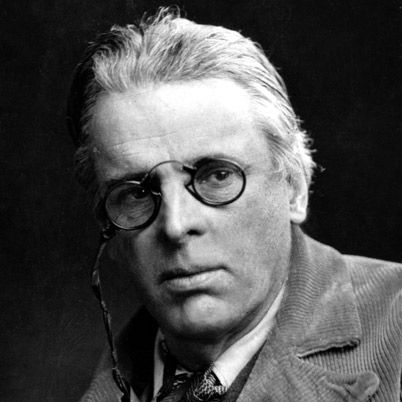
(1865-1939)

Who Was William Butler Yeats?
William Butler Yeats published his first works in the mid-1880s while a student at Dublin's Metropolitan School of Art. His early accomplishments include The Wanderings of Oisin and Other Poems (1889) and such plays as The Countess Cathleen (1892) and Deirdre (1907). In 1923, he was awarded the Nobel Prize for Literature. He went on to pen more influential works, including The Tower (1928) and Words for Music Perhaps and Other Poems (1932). Yeats, who died in 1939, is remembered as one of the leading Western poets of the 20th century.
William Butler Yeats was born on June 13, 1865, in Dublin, Ireland, the oldest child of John Butler Yeats and Susan Mary Pollexfen. Although John trained as a lawyer, he abandoned the law for art soon after his first son was born. Yeats spent much of his early years in London, where his father was studying art, but frequently returned to Ireland as well.
In the mid-1880s, Yeats pursued his own interest in art as a student at the Metropolitan School of Art in Dublin. Following the publication of his poems in the Dublin University Review in 1885, he soon abandoned art school for other pursuits.
Career Beginnings
Around this time, Yeats founded the Rhymers' Club poetry group with Ernest Rhys. He also joined the Order of the Golden Dawn, an organization that explored topics related to the occult and mysticism. While he was fascinated with otherworldly elements, Yeats's interest in Ireland, especially its folktales, fueled much of his output. The title work of The Wanderings of Oisin and Other Poems (1889) draws from the story of a mythic Irish hero.
Acclaimed Poet and Playwright
In addition to his poetry, Yeats devoted significant energy to writing plays. He teamed with Lady Gregory to develop works for the Irish stage, the two collaborating for the 1902 production of Cathleen Ni Houlihan . Around that time, Yeats helped found the Irish National Theatre Society, serving as its president and co-director, with Lady Gregory and John Millington Synge. More works soon followed, including On Baile's Strand , Deirdre and At the Hawk's Well .
Following his marriage to Georgie Hyde-Lees in 1917, Yeats began a new creative period through experiments with automatic writing. The newlyweds sat together for writing sessions they believed to be guided by forces from the spirit world, through which Yeats formulated intricate theories of human nature and history. They soon had two children, daughter Anne and son William Michael.
The celebrated writer then became a political figure in the new Irish Free State, serving as a senator for six years beginning in 1922. The following year, he received an important accolade for his writing as the recipient of the Nobel Prize in Literature. According to the official Nobel Prize website, Yeats was selected "for his always inspired poetry, which in a highly artistic form gives expression to the spirit of a whole nation."
Yeats continued to write until his death. Some of his important later works include The Wild Swans at Coole (1917), A Vision (1925), The Tower (1928) and Words for Music Perhaps and Other Poems (1932). Yeats passed away on January 28, 1939, in Roquebrune-Cap-Martin, France. The publication of Last Poems and Two Plays shortly after his death further cemented his legacy as a leading poet and playwright.
QUICK FACTS
- Name: William Butler Yeats
- Birth Year: 1865
- Birth date: June 13, 1865
- Birth City: Dublin
- Birth Country: Ireland
- Gender: Male
- Best Known For: William Butler Yeats was one of the greatest English-language poets of the 20th century and received the Nobel Prize for Literature in 1923.
- Fiction and Poetry
- Journalism and Nonfiction
- Astrological Sign: Gemini
- Metropolitan School of Art (Dublin)
- Nacionalities
- Death Year: 1939
- Death date: January 28, 1939
- Death City: Menton
- Death Country: France
We strive for accuracy and fairness.If you see something that doesn't look right, contact us !
CITATION INFORMATION
- Article Title: William Butler Yeats Biography
- Author: Biography.com Editors
- Website Name: The Biography.com website
- Url: https://www.biography.com/authors-writers/william-butler-yeats
- Access Date:
- Publisher: A&E; Television Networks
- Last Updated: August 17, 2020
- Original Published Date: April 2, 2014

Sor Juana Inés de la Cruz

14 Hispanic Women Who Have Made History

10 Famous Langston Hughes Poems

5 Crowning Achievements of Maya Angelou

Amanda Gorman

Langston Hughes

7 Facts About Literary Icon Langston Hughes

Maya Angelou
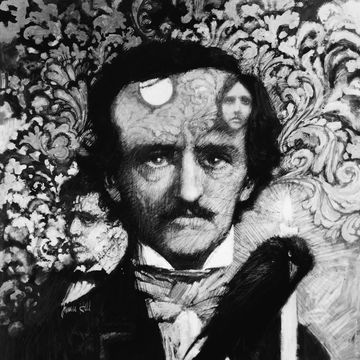
How Did Edgar Allan Poe Die?
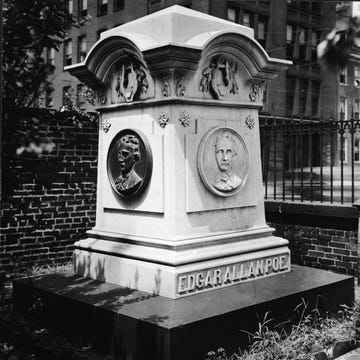
Why Edgar Allan Poe’s Death Remains a Mystery
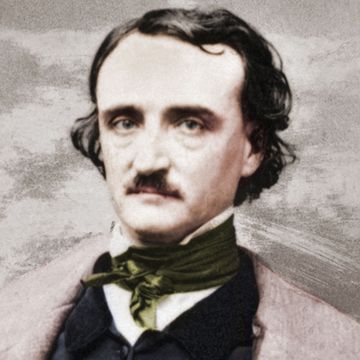
Edgar Allan Poe
- World Biography
William Butler Yeats Biography
Born: June 13, 1865 Dublin, Ireland Died: January 28, 1939 Roquebrune, France Irish poet and dramatist
William Butler Yeats was an Irish poet and dramatist (playwright). Some think he was the greatest poet of the twentieth century. He won the Nobel Prize for literature in 1923. The works of William Butler Yeats form a bridge between the romantic poetry of the nineteenth century and the hard clear language of modern poetry.
Early years

At the age of nineteen Yeats enrolled in the Metropolitan School of Art in Dublin, intending to become a painter. In 1887 he became a literary correspondent for two American newspapers. Among his acquaintances at this time were his father's artist and writer friends, including William Morris (1834–1896), George Bernard Shaw (1856–1950), and Oscar Wilde (1856–1900).
Important friendships
In 1889 Yeats met the woman who became the greatest single influence on his life and poetry, Maud Gonne. She was Yeats's first and deepest love. She admired his poetry but rejected his repeated offers of marriage, choosing instead to marry Major John MacBride. Gonne came to represent for Yeats the ideal of feminine beauty—she appears as Helen of Troy in several of his poems—but a beauty disfigured and wasted by what Yeats considered an unsuitable marriage and her involvement in a hopeless political cause, Irish independence.
Yeats became a founding member of literary clubs in London, England, and Dublin. During this period he became friends with the dramatist John Millington Synge (1871–1909). He was introduced to Synge in 1896, and later directed the Abbey Theatre in Dublin with him.
The American poet Ezra Pound (1885–1972) came to London for the specific purpose of meeting Yeats in 1909. Pound served as Yeats's secretary off and on between 1912 and 1916. Pound introduced Yeats to the Japanese No drama (a form of Japanese theater similar in many ways to Greek tragedy). Yeats's verse dramas (plays in the form of poetry) reflect the ceremonial formality and symbolism of No .
The death of Maud Gonne's husband seemed to offer promise that she might now accept Yeats's proposal of marriage. She turned him down in 1917. He proposed to her daughter, Iseult MacBride, only to be rejected by her too. That same year he married Miss George Hyde-Less.
Soon after their wedding, Yeats's new wife developed the power of automatic writing (writing as though coming from an outside source) and began to utter strange phrases in her sleep that she thought were dictated by spirits from another world. Yeats copied down these fragments and incorporated them into his occult aesthetic system, published as A Vision in 1925. A daughter, Anne Butler Yeats, was born in 1919, and a son, William Michael, two years later.
Poet and dramatist
Yeats's first book of poems, The Wanderings of Oisin and Other Poems, was published in 1889. In the long title poem he began his celebration of the ancient Irish heroes Oisin, Finn, Aengus, and St. Patrick. This interest was evident also in his collection of Irish folklore, Fairy and Folk Tales (1888). His long verse drama, The Countess Cathleen (1892), was a combination of modern dramatic forms with ancient beliefs and modern Irish history. He followed this with his collection of romantic tales and mood sketches, The Celtic Twilight (1893). Yeats's Secret Rose (1897) includes poems that he called personal, occult, and Irish. More figures from ancient Irish history and legend appeared in this volume. The Wind among the Reeds (1899) won the Royal Academy Prize as the best book of poems published that year.
The Abbey Theater
An important milestone in the history of the modern theater occurred in 1902, when Yeats, Maud Gonne, Douglas Hyde, and George Russell founded the Irish National Theatre Society, out of which grew the Abbey Theatre Company in 1904. Yeats's experience with the theater gave to his volume of poems In the Seven Woods (1907) a new style—less elaborate, less romantic, and more straight forward in language and imagery.
Some of Yeats's plays show his great interest in ancient royalty and "half-forgotten things," but his poetry was unmistakably new. Yeats's play At the Hawk's Well, written and produced in 1915, showed the influence of Japanese No drama in its use of masks and in its dances by a Japanese choreographer.
From 1918 to 1923 Yeats and his wife lived in a restored tower at Ballylee (Galway), Ireland. The tower became a prominent symbol in his best poems, notably in those that make up The Tower (1928).
Yeats was elected an Irish senator in 1922, a post he filled until his retirement in 1928. He received the Nobel Prize in Literature in 1923. His acceptance of the role and its responsibilities had been foreshadowed (predicted) in his poems Responsibilities (1914). The outbreak of civil war in Ireland in 1922 had heightened his conviction that the artist must lead the way through art, rather than through politics, to a harmonious (in tune) ordering of chaos.
Aesthetic theories and systems
Yeats devised his doctrine of the mask as a means of presenting very personal thoughts and experiences to the world without danger of sentimentality (excessive emotions). By discovering the kind of man who would be his exact opposite, Yeats believed he could then put on the mask of this ideal "antiself" and thus produce art from the synthesis (combination) of opposing natures. For this reason his poetry is often structured on paired opposites, as in "Sailing to Byzantium."
Yeats turned to magic for the illogical system that would oppose and complete his art. He drew upon Buddhism (an ancient Eastern religion), as well as upon Jewish and Christian mystic (spiritual) books to try and capture what he thought was a harmony of the opposite elements of life
Yeats believed that history was cyclical (circular) and that every two thousand years a new cycle, which is the opposite of the cycle that has preceded it, begins. In his poem "The Second Coming," the birth of Christ begins one cycle, which ends, as the poem ends, with a "rough beast," mysterious and menacing, who "slouches towards Bethlehem to be born."
Yeats's last plays were Purgatory (1938) and The Death of Cuchulain (1938). He died in Roquebrune, France, on January 28, 1929. He had retired there because of ill health. He had the lines of one of his poems engraved on his tombstone in Ireland: "Cast a cold eye / On life, on death. / Horseman, pass by!" Yeats was not only one of the greatest poets and a major figure in the Irish literary renaissance (rebirth), but also wrote some of the greatest of all twentieth-century literature.
For More Information
Jeffares, A. Norman. W. B. Yeats, a New Biography. New York: Farrar Straus Giroux, 1989.
Larrissey, Edward. Yeats the Poet: The Measures of Difference. New York: Harvester Wheatsheaf, 1994.
Macrae, Alistair D. F. W. B. Yeats: A Literary Life. New York: St. Martin's Press, 1994.
User Contributions:
Comment about this article, ask questions, or add new information about this topic:.
- National Poetry Month
- Materials for Teachers
- Literary Seminars
- American Poets Magazine
Main navigation
- Academy of American Poets
User account menu

Search more than 3,000 biographies of contemporary and classic poets.
Page submenu block
- literary seminars
- materials for teachers
- poetry near you
W. B. Yeats
read this poet’s poems
Born in Sandymount, Dublin, Ireland, on June 13, 1865, William Butler Yeats was the son of the well-known Irish painter, John Butler Yeats. He spent his childhood in County Sligo, where his parents were raised, and in London. He returned to Dublin at the age of fifteen to continue his education and to study painting, but quickly discovered that he preferred poetry. Born into the Anglo-Irish landowning class, Yeats became involved with the Celtic Revival, a movement against the cultural influences of English rule in Ireland during the Victorian period, which sought to promote the spirit of Ireland’s native heritage. Though Yeats never learned Irish Gaelic himself, his writing at the turn of the century drew extensively from sources in Irish mythology and folklore. Also a potent influence on his poetry was the Irish revolutionary, Maud Gonne, whom he met in 1889, a woman equally famous for her passionate nationalist politics and her beauty. Though she married another man in 1903 and grew apart from Yeats (and Yeats himself was eventually married to another woman, Georgie Hyde Lees), she remained a powerful figure in his poetry.
Yeats was deeply involved in politics in Ireland and, in the twenties, despite Irish independence from England, his verse reflected a pessimism about the political situation in Ireland and the rest of Europe, paralleling the increasing conservatism of his American counterparts in London, T. S. Eliot and Ezra Pound . His work after 1910 was strongly influenced by Pound, becoming more modern in its concision and imagery, but Yeats never abandoned his strict adherence to traditional verse forms. He had a life-long interest in mysticism and the occult, which was off-putting to some readers, but he remained uninhibited in advancing his idiosyncratic philosophy, and his poetry continued to grow stronger as he grew older. Appointed a senator of the Irish Free State in 1922, he is remembered as an important cultural leader, a major playwright (he was one of the founders of the famous Abbey Theatre in Dublin), and as one of the greatest poets in any language of the twentieth century.
William Butler Yeats was awarded the Nobel Prize for Literature in 1923 and died on January 28, 1939, in Roquebrune-Cap-Martin, France.
Related Poets
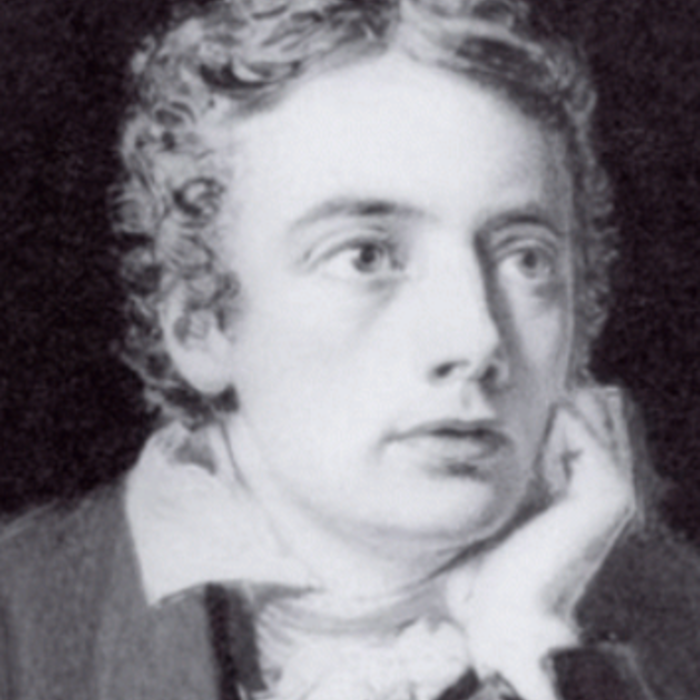
William Wordsworth
William Wordsworth, who rallied for "common speech" within poems and argued against the poetic biases of the period, wrote some of the most influential poetry in Western literature, including his most famous work, The Prelude , which is often considered to be the crowning achievement of English romanticism.
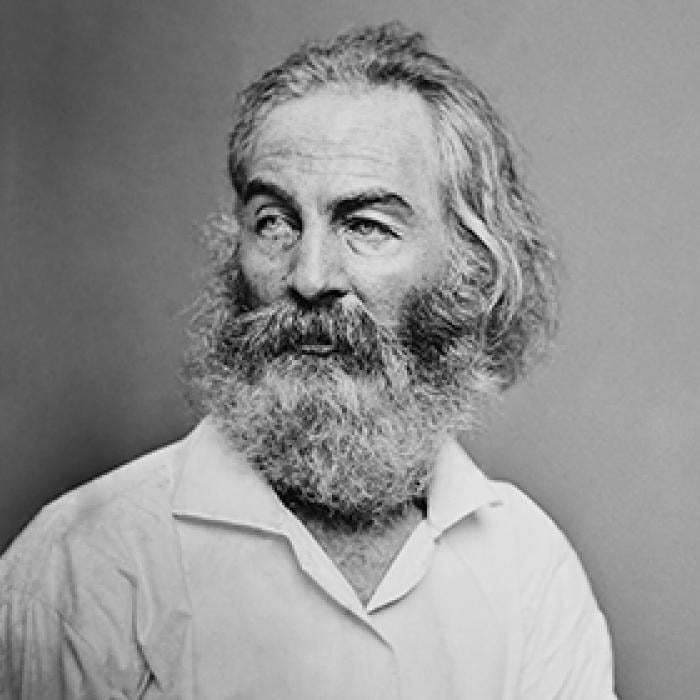
Walt Whitman
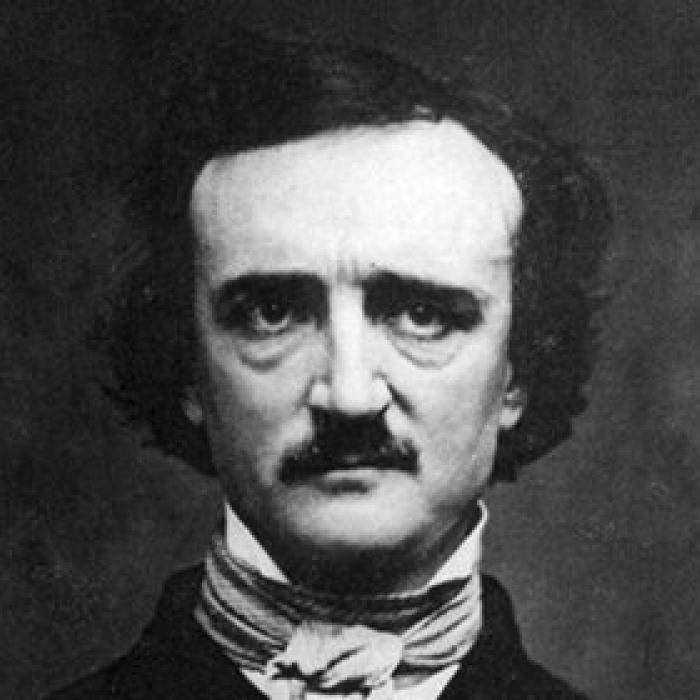
Edgar Allan Poe
Born in 1809, Edgar Allan Poe had a profound impact on American and international literature as an editor, poet, and critic.
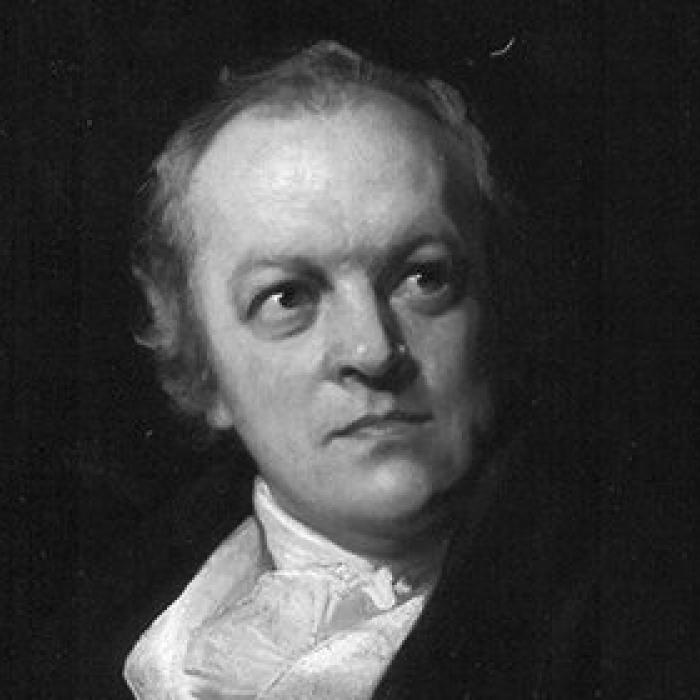
William Blake
William Blake was born in London on November 28, 1757, to James, a hosier, and Catherine Blake. Two of his six siblings died in infancy. From early childhood, Blake spoke of having visions—at four he saw God "put his head to the window"; around age nine, while walking through the countryside, he saw a tree filled with angels.
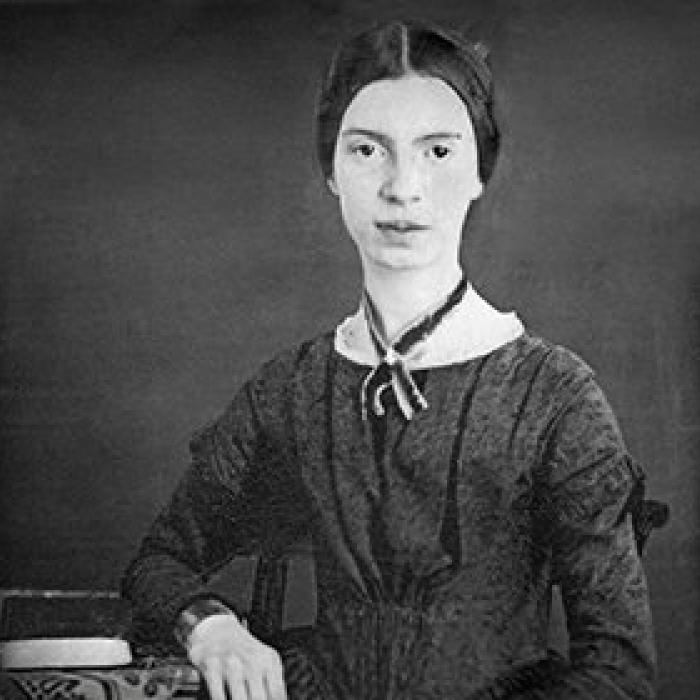
Emily Dickinson
Emily Dickinson was born on December 10, 1830, in Amherst, Massachusetts. While she was extremely prolific as a poet and regularly enclosed poems in letters to friends, she was not publicly recognized during her lifetime. She died in Amherst in 1886, and the first volume of her work was published posthumously in 1890.

Newsletter Sign Up
- Academy of American Poets Newsletter
- Academy of American Poets Educator Newsletter
- Teach This Poem
Profile of William Butler Yeats
George C. Beresford / Hulton Archive / Getty Images
- Favorite Poems & Poets
- Poetic Forms
- Best Sellers
- Classic Literature
- Plays & Drama
- Shakespeare
- Short Stories
- Children's Books
- B.A., English and American Literature, University of California at Santa Barbara
- B.A., English, Columbia College
William Butler Yeats was both poet and playwright, a towering figure in 20th-century literature in English, winner of the Nobel Prize for Literature in 1923, a master of traditional verse forms and at the same time an idol of the modernist poets who followed him.
William Butler Yeats was born into a wealthy, artistic Anglo-Irish family in Dublin in 1865. His father, John Butler Yeats, was educated as an attorney but abandoned the law to become a well-known portrait painter. It was his father’s career as an artist that took the family to London for four years during Yeats’ boyhood. His mother, Susan Mary Pollexfen, was from Sligo, where Yeats spent summers in childhood and later made his home. It was she who introduced William to the Irish folktales which permeated his early poetry. When the family returned to Ireland, Yeats attended high school and later art school in Dublin.
A Young Poet
Yeats was always interested in mystical theories and images, the supernatural, the esoteric and the occult. As a young man, he studied the works of William Blake and Emanuel Swedenborg and was a member of the Theosophical Society and Golden Dawn . But his early poetry was modeled on Shelley and Spenser (e.g., his first published poem, “The Isle of Statues,” in The Dublin University Review ) and drew on Irish folklore and mythology (as in his first full-length collection, The Wanderings of Oisin and Other Poems , 1889). After his family returned to London in 1887, Yeats founded the Rhymer’s Club with Ernest Rhys.
In 1889 Yeats met Irish nationalist and actress Maud Gonne, the great love of his life. She was committed to the political struggle for Irish independence; he was devoted to the revival of Irish heritage and cultural identity, but through her influence, he did become involved in politics and joined the Irish Republican Brotherhood. He proposed to Maud several times, but she never consented and ended up marrying Major John MacBride, a Republican activist who was executed for his role in the 1916 Easter Rising. Yeats wrote many poems and several plays for Gonne, she earned great acclaim in his Cathleen ni Houlihan .
The Irish Literary Revival and the Abbey Theatre
With Lady Gregory and others, Yeats was a founder of the Irish Literary Theatre, which sought to revive Celtic dramatic literature. This project lasted only a couple of years, but Yeats was soon joined by J.M. Synge in the Irish National Theatre, which moved into its permanent home at the Abbey Theatre in 1904. Yeats served as its director for some time and to this day, it plays an active role in launching the careers of new Irish writers and playwrights.
In 1913, Yeats became acquainted with Ezra Pound , an American poet 20 years his junior who had come to London to meet him, because he considered Yeats the only contemporary poet worth studying. Pound served as his secretary for several years, causing a ruckus when he sent several of Yeats’ poems to be published in Poetry magazine with his own edited changes and without Yeats’ approval. Pound also introduced Yeats to the Japanese Noh drama, on which he modeled several plays.
Mysticism & Marriage
At 51, determined to marry and have children, Yeats finally gave up on Maud Gonne and proposed to Georgie Hyde-Lees, a woman half his age whom he knew from his esoteric explorations. In spite of the age difference and his long unrequited love for another, it turned out to be a successful marriage and they had two children. For many years, Yeats and his wife collaborated in a process of automatic writing, in which she contacted various spirit guides and with their help, Yeats constructed the philosophical theory of history contained in A Vision , published in 1925.
Immediately after the formation of the Irish Free State in 1922, Yeats was appointed to its first Senate, where he served for two terms. In 1923 Yeats was awarded the Nobel Prize in Literature. It is generally agreed that he is one of a very few Nobel laureates who produced his best work after receiving the Prize. In the last years of his life, Yeats’ poems became more personal and his politics more conservative. He founded the Irish Academy of Letters in 1932 and continued to write quite prolifically. Yeats died in France in 1939; after World War II his body was moved to Drumcliffe, County Sligo.
- Classic Poems Set to Music
- A List of Every Nobel Prize Winner in Literature
- A Guide to Yeats' 'The Second Coming'
- Yeats and 'The Symbolism of Poetry'
- Singing the Old Songs: Traditional and Literary Ballads
- Yeats Poetry
- Biography of Hilda Doolittle, Poet, Translator, and Memoirist
- Biography of Ernest Hemingway, Pulitzer and Nobel Prize Winning Writer
- 42 Must-Read Feminist Female Authors
- Fast Facts About George Bernard Shaw's Life and Plays
- A Classic Collection of Bird Poems
- Biography of Robert Frost
- 18 Classic Poems of the Christmas Season
- Classic British and American Essays and Speeches
- A Brief Overview of British Literary Periods
- Anadiplosis: Definition and Examples

W.B. Yeats Biography
William Butler Yeats (1865-1939) was born at Georgeville, Sandymount Avenue, Dublin, the eldest child of John Butler Yeats and Susan Pollexfen. His father, a barrister, later became an artist. His mother was the daughter of a prosperous shipping merchant in Sligo. John and Susan were married at St. John’s Church in Sligo in 1863. The couple had six children, four of whom lived to adulthood and were extraordinarily talented: William (Willie, b.1865 later W.B.) Susan (Lily b.1866), Elizabeth (Lollie, b.1868), Robert (Bobbie, 1870-73), John junior (Jack B, b.1871) and baby Grace (Gracie, 1875-76).
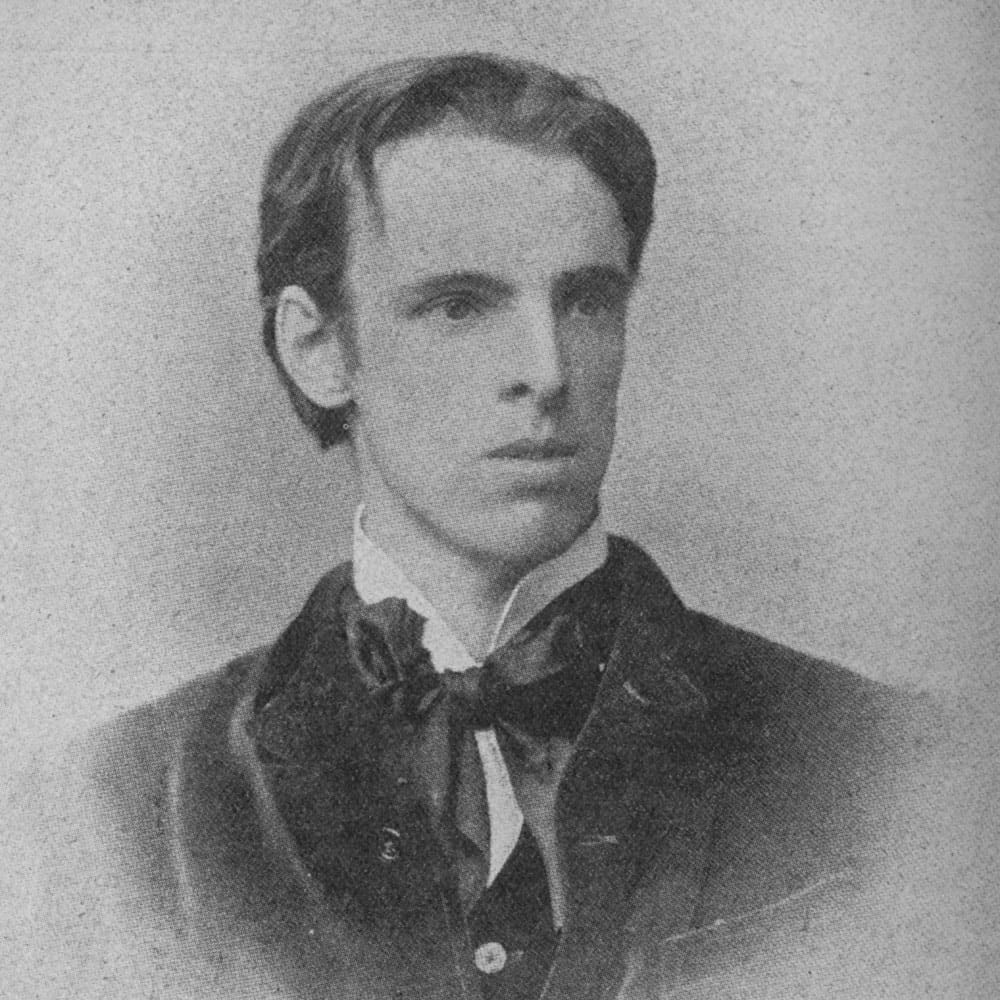
W.B. had a strong Sligo lineage from both of his parents. His mother Susan was born in Sligo, the daughter of William and Elizabeth Pollexfen. His paternal great grandfather Rev. John Yeats had served as rector at Drumcliffe Church, (1811-46), a short distance north of the town. His maternal great grandfather had started the Middleton milling and shipping businesses, later the Middleton & Pollexfen Company that developed into the largest business in 19th century Sligo, owning ships, were chandlers, had controlling shares in the Sligo Steam Navigation Company, and interests in the butter market as well as being general and grain merchants. The Pollexfens had, by now, moved from Union Place to Merville, a large house with sixty acres which would become home to the Yeats children with increasing frequency in future years.
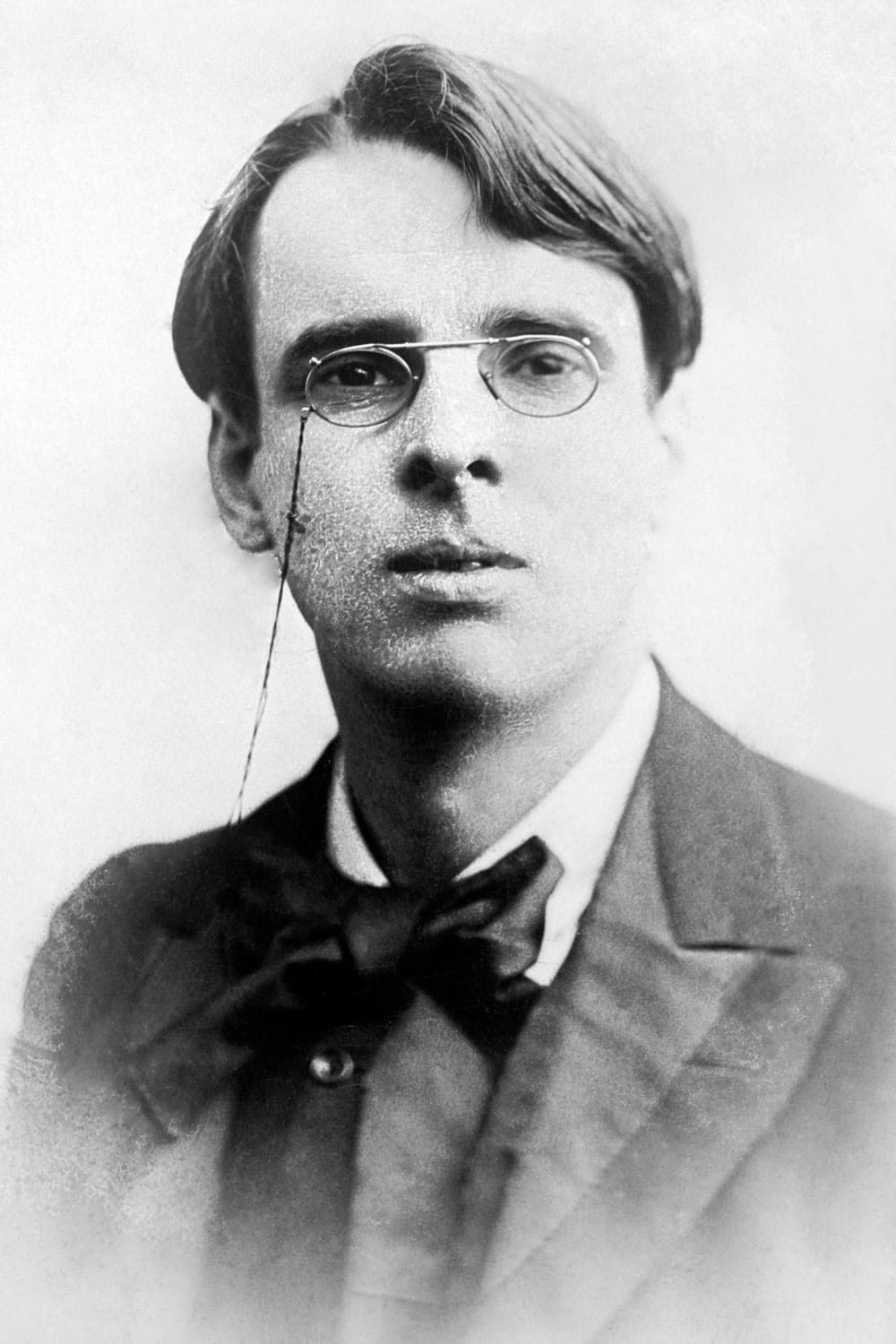
This set the seeds that would last a lifetime. Sligo’s landscape, culture and folklore became formative influences on both W.B. and Jack. For W.B., the landscape was central to his writing, Jack drew on the rolling waves and seafarers, the circus and horse racing which formed the core of his paintings. And while this was a time of joy and growth for the young family, it was also a time of great sadness, following the death of Bobbie from croup in 1873 and Gracie in 1876.
During this time, their father John largely stayed in London, living a bohemian life as an artist, while Susan brought the children up in the more conservative and strict environment of the Pollexfen household in Sligo. And while it is evident from early on that W.B.’s parents were very different people and largely incompatible, they did engender in him his love of stories and writing. His mother told him stories from her youth and his father, very much a free spirit, encouraged creative thought and freedom.
Indeed, in his unpublished memoirs, John Yeats described his concerns for his son:
‘I am continually anxious about Willy — he is almost never out of my thoughts. I believe him to be intensely affectionate but from shyness, sensitiveness and nervousness very difficult to win and yet he is worth winning. I should of course like to see him made do what was right but he will only develop by kindness and affection and gentleness.’ – John B. Yeats.
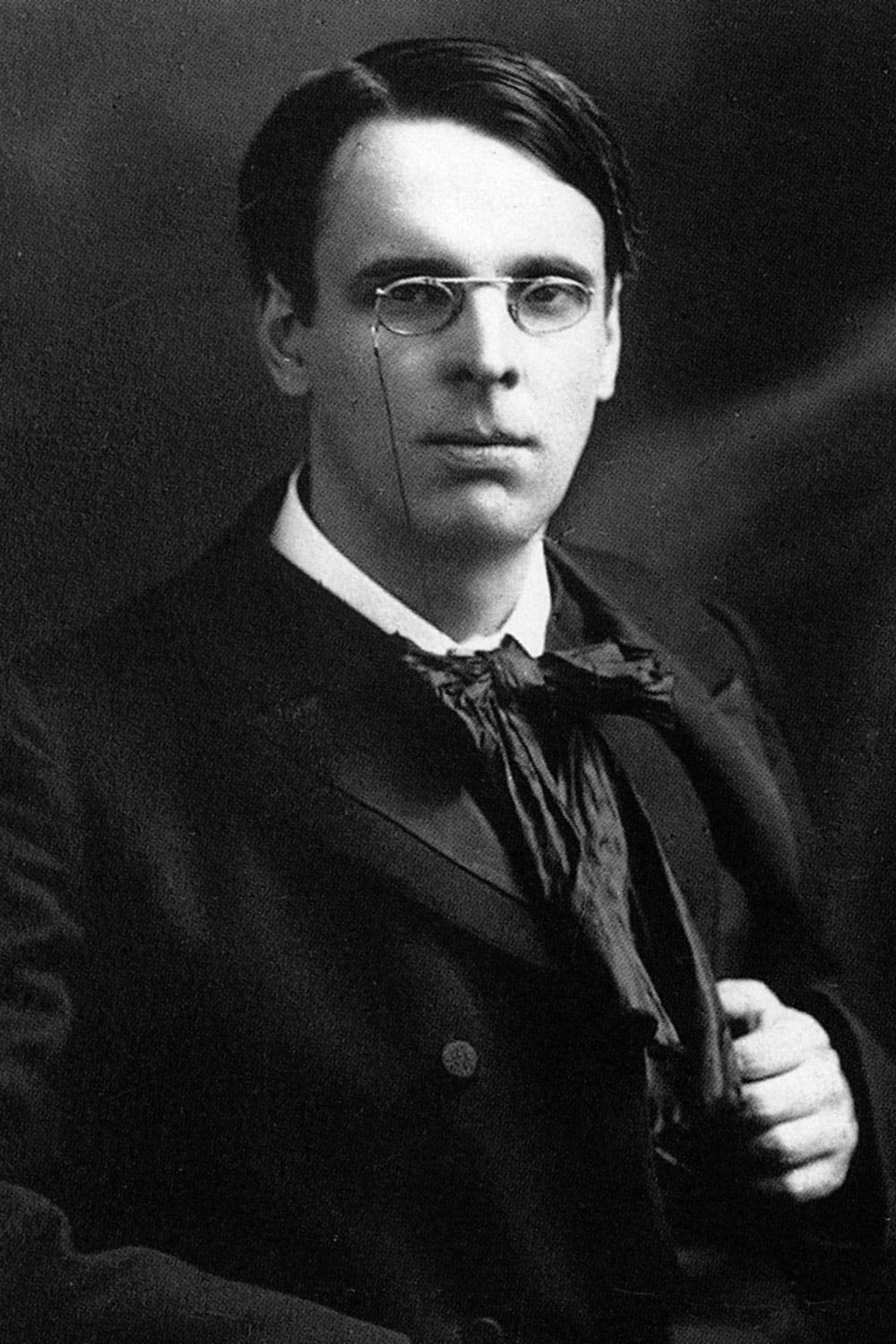
After the family returned to live in Dublin in 1881, W.B. attended the High School, Harcourt St. He had his first works published in Dublin University Review , while he was a student at the Metropolitan School of Art. As he grew acquainted with other writers and artists, he took up the life of a professional writer, moving back to London with his family in 1887.
In 1888 they moved into No. 3, Blenheim Road, Bedford Park, where the family remained until returning to Dublin in 1902. It was in this house that W.B. and friends founded The Irish Literary Society in 1891. His early writings include The Wanderings of Oisin and Other Poems (1889), which gave notice that a young poet of some promise was in the making. The long title poem was an expression of Yeats’s fascination with Irish mythology, themes he explored in much of his earlier work and which he returned to later in life. He made a resolution about this time, to do for Ireland what Shakespeare did for England, i.e. write plays about important historical figures – he focused on mythological figures like Oisín, Diarmuid and Gráinne, Queen Maeve and Cuchulain, from ‘Ireland’s heroic past greatness’, and wrote six plays on Cuchulain.
O Oisin, mount by me and ride To shores by the wash of the tremulous tide, Where men have heaped no burial-mounds, And the days pass by like a wayward tune,
from The Wanderings of Oisín, Book I (1889)
Following the death of the great Irish Parliamentarian Charles Stewart Parnell in 1891, the rise in military nationalism was at odds with Yeats’s views of Irish identity. This is despite his own foray into political nationalism. He disagreed with the premise that Irish freedom should be achieved through armed insurgency. He believed that a return to traditional values, based on heritage, history and folklore was central to shaping our Irish identity.
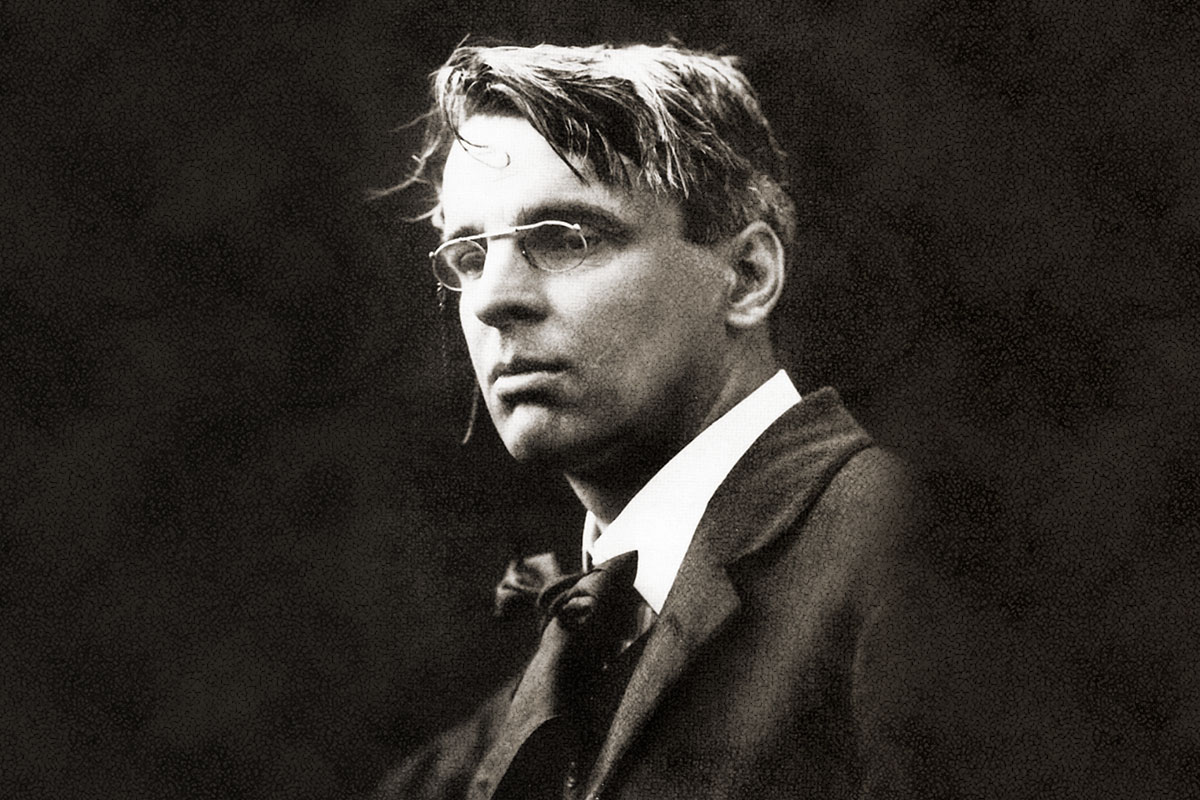
W.B. wrote in Introduction to The Celtic Twilight 1893 edition ,
‘I have therefore written down accurately and candidly much that I have heard and seen, and, except by way of commentary, nothing that I have merely imagined. I have, however, been at no pains to separate my own beliefs from those of the peasantry, but have rather let my men and women, dhouls and faeries, go their way unoffended or defended by any argument of mine.’
In 1896 W.B. moved away from the family home to live independently. He met Lady Augusta Gregory that summer. She opened her house to the literary figures of the day and he spent part of every summer for nearly two decades at Coole, Co. Galway. They collaborated in several publications.
Together with Lady Gregory he founded the Irish National Theatre, later to become the Abbey Theatre. He wrote some of the early plays for the theatre, including Land of Heart’s Desire (1894), Cathleen Ní Houlihan (1902) and The Countess Kathleen (1900), written for his muse, the beautiful and redoubtable Maud Gonne, who played the leading part. Yeats asked Maud to marry him several times, the first of these in 1899, but on each occasion she refused – resulting in splendid poems of unrequited love.
As Ireland veered towards military confrontation with the British, culminating in the 1916 Rising, so too did Yeats’s poetry change in those fractious years of the early 20th century.
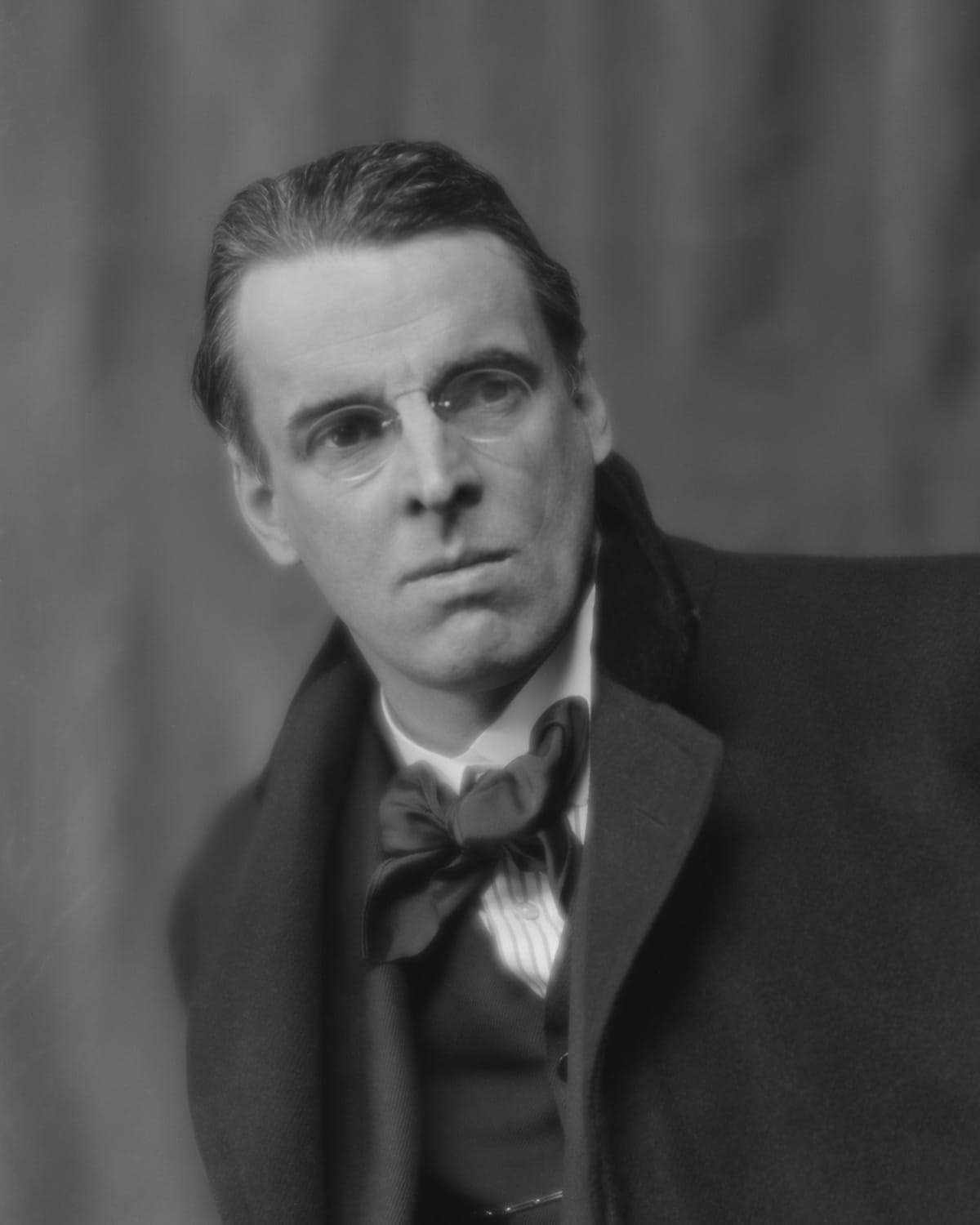
He gradually discarded the lyrical nature of his writing, his verse more sparse and direct, focussing on the dynamic changes in society. In the aftermath of the Rising – its leaders executed by the English, transforming public opinion to favour the republican cause – Yeats said “I had no idea that any public event could so deeply move me,” and his poem Easter 1916 is an expression of his mixed views on the insurrection itself, his admiration for the blood sacrifice of its leaders tempered with a realistic appraisal of their actions.
All changed, changed utterly: A terrible beauty is born.
from Easter 1916 (1920)
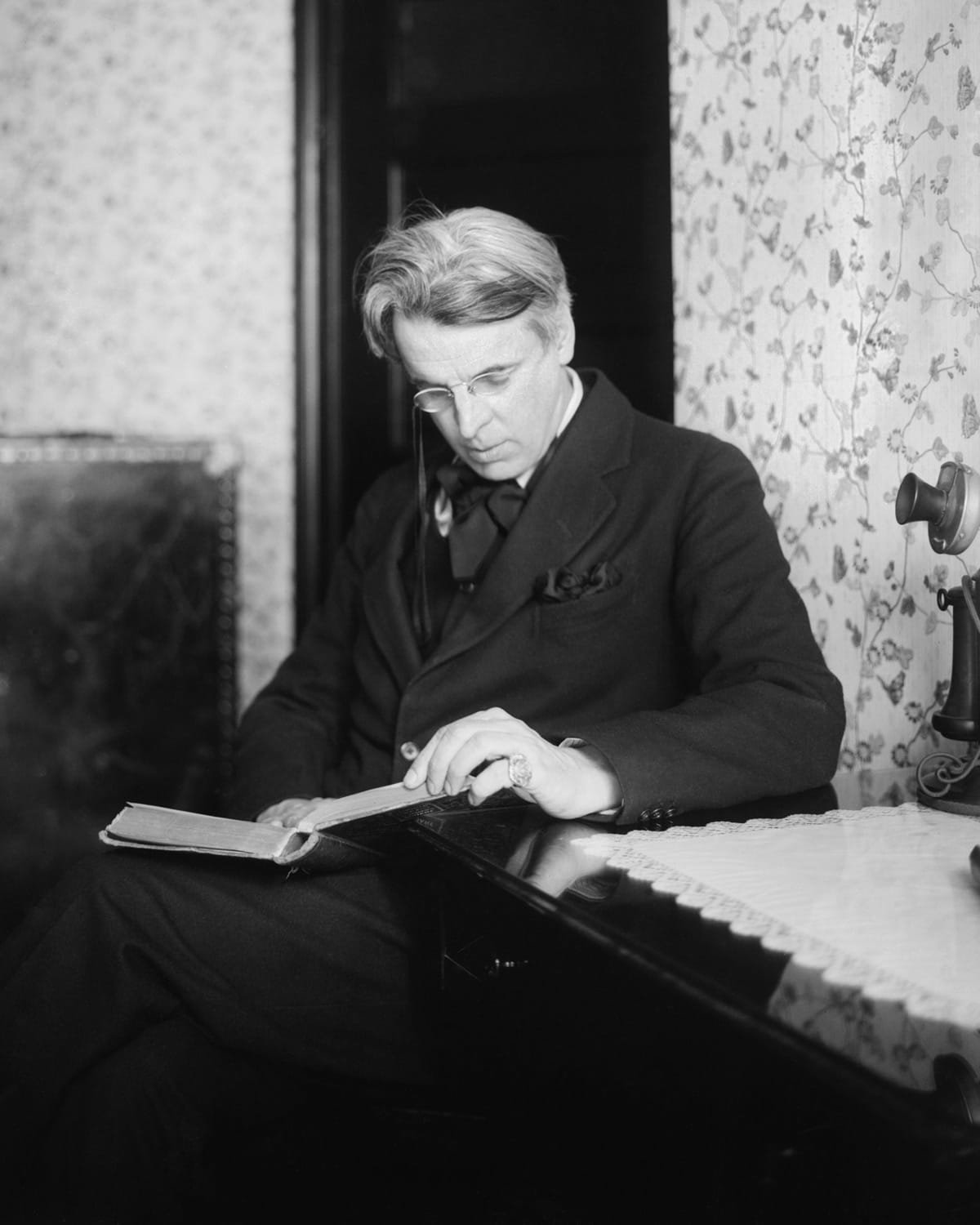
He joined a secret society called The Golden Dawn , a group that believed in the practice of ritual magic and he remained a long standing member of this group, exploring related themes in some of his work. He dreamed of setting up his ‘Castle of Heroes’ on Castle island in Lough Key, where 20th century Ireland might commune with its mystical past. In old age he regretted this didn’t materialise.
In the early years of the 20th century, Yeats was involved extensively with the Abbey Theatre, managing and writing up to 10 plays in this period. The Yeats household including W.B. was supported financially in the 1890s-1902 by his sisters Lily (Susan Mary Yeats) and Lollie (Elizabeth Corbet Yeats).
In 1902 Evelyn Gleeson established an art and crafts co-operative, the Dun Emer Industries employing Lily to supervise the embroidery department and Lollie to start a printing press, at considerable loss in their incomes. By 1908 Lily & Lollie had set up independently as Cuala Industries. W.B. advised on ‘suitable’ books to publish, often a source of contention.
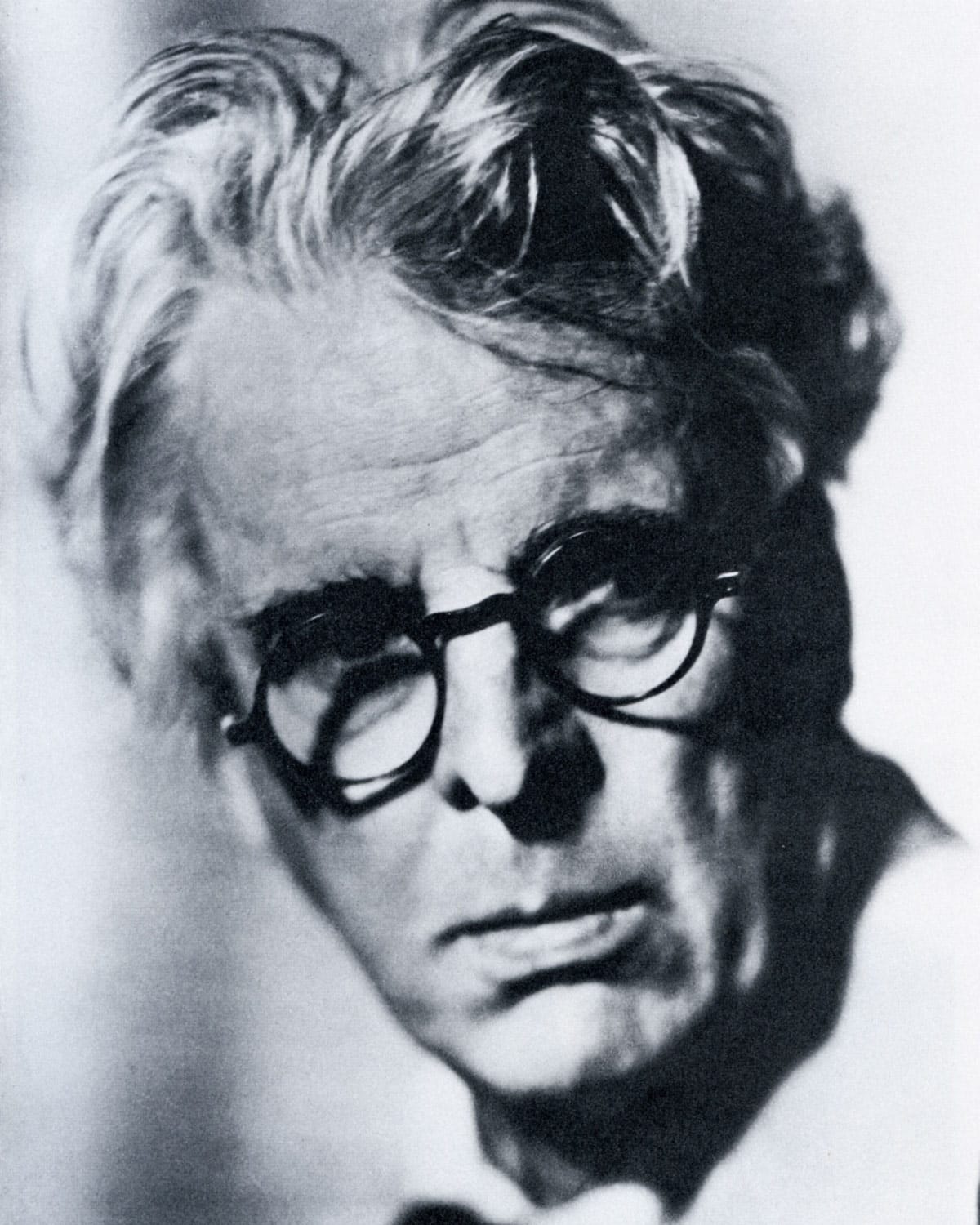
He was appointed to the Irish Senate in 1922. A year later in 1923, he was awarded the Nobel Prize for Literature. He wrote some of his finest work in the following years, and as Europe began its turbulent road to the Second World War, he published his final volume of poetry, titled New Poems , in 1938. The following year, he died in the Hôtel Idéal Séjour Cap-Martin, in the south of France. His body was interred in the cemetery of Roquebrune, but subsequently repatriated to Sligo after the end of the war, to his final resting place in Drumcliffe Graveyard.
His posthumous volume, Last poems and two plays , which included the testamentary Under Ben Bulben and the play completed on his death-bed, The Death of Cuchulain , appeared in July 1939.
Not any god alive, nor mortal dead, Has slain so mighty armies, so great kings, Nor won the gold that now Cuchulain brings.
from The Death of Cuchulain (1939)
Our Partners
This project was funded by the Rural Regeneration Development Fund through the Department of Rural & Community Development.

About the Project
Yeats Trail Locations
Yeats Biography
Touring Route
Illustrations: Annie West
This site uses cookies. By continuing to browse the site, you are agreeing to our use of cookies.
Cookie and Privacy Settings
We use necessary cookies to make our site work. We'd also like to set optional analytics cookies to help us improve it. We won't set optional cookies unless you enable them. Using this tool will set a cookie on your device to remember your preferences.
For more detailed information about the cookies we use, see our Cookies Page
Essential cookies enable core functionality such as security, network management, and accessibility. You may disable these by changing your browser settings, but this may affect how the website functions.
Click to enable/disable Google Analytics tracking. We'd like to set Google Analytics cookies to help us to improve our website by collecting and reporting information on how you use it. The cookies collect information in a way that does not directly identify anyone.
We also use different external services like Google Webfonts, Google Maps and external Video providers. Since these providers may collect personal data like your IP address we allow you to block them here. Please be aware that this might heavily reduce the functionality and appearance of our site. Changes will take effect once you reload the page.
Google Webfont Settings: Click to enable/disable Google Webfonts.
Google Map Settings: Click to enable/disable Google Maps.
Vimeo and Youtube video embeds: Click to enable/disable video embeds.
You can read about our privacy policy in detail on our Privacy Policy Page.
Our Greatest Poet-Statesman: Authorized Biography of William Butler Yeats
Growth of a genius.
- William Butler Yeats
William Butler Yeats’s Life
An Irish romantic poet and leading figure of twentieth century literature, William Butler Yeats was born in Sandymount, County Dublin, on June 13, 1865. His father, John Butler Yeats, was a linen merchant, a soldier, and a popular painter. His mother, Susan Mary Pollexfen, belonged to a rich merchant family of Sligo. Shortly after William Yeats’s birth, his family moved to the Pollexfen home in County Sligo, and stayed with his maternal family. Gradually, the surrounding environment there became the young poet’s spiritual home. William came from a highly creative and artistic family; his brother Jack was a well-known painter, and his sisters Mary and Elizabeth played their role in the Arts and Crafts Movement. His family relocated to England to provide financial assistance to their father, John, to further his artistic career.
Initially, Yeats’s parents taught their children at home. At the age of twelve, William attended the Godolphin school for four years. Academically, he was not a brilliant student. Although he faced difficulties in languages and mathematics, he was good in Latin. William and his family stayed in England until 1880, but then moved back to Dublin due to some financial problems. William resumed his studies at Erasmus Smith High School, located near his father’s studio. This is where he would spend his leisure time, and he got acquainted with the well-known writers and artists of the city. It was at this time that William became eagerly interested in poetry and began writing. Subsequently, the Dublin University Review acknowledged his talent and published a collection of his first poems in 1885.
William continued his studies at the Metropolitan School of Art in Thomas Street from 1884 to 1886. He was only seventeen when he wrote his first popular works under the influence of Percy Bysshe Shelley , Edmund Spencer, and William Blake. His family spent some time in Dublin, and again moved to London in 1887. In London, William co-founded a club with Ernest Rhys based on London poets. They called it the Rhymers’ Club, and would regularly meet to recite their poems. After joining the company of literary figures, William felt encouraged and published his first notable poem , “The Isle of Statues.” From this point on, he began writing on a regular basis.
In 1889, Yeats met a zealous Irish Nationalist and English heiress named Maud Gonne. Gradually, William developed an intense infatuation with her outspoken manner and beauty . She later played a great role in his poetry. William proposed to her three times, but each time she refused; she married an Irish Nationalist instead. Heartbroken, William indulged in many love affairs but for a long time nothing lasted. Eventually, at the age of fifty-one, he married a twenty-five-year-old girl, Georgie Hyde Lees. In spite of the age difference, their marriage worked, and they had two children. Unfortunately, William’s health started deteriorating in 1925, and he died in a hotel in France on January 28, 1939.
William Butler Yeats’s Works
The first popular poem of William Yeats was “The Isle of Statues.” He composed his first solo work “ Mosada: A Dramatic Poem” in 1886, after which he published “The Wanderings of Oisin and Other poems” in 1889. He also wrote poems with mystical and esoteric themes as well as with the subject of love and published them under the title of “Poems” in 1895. His other collections of poetry include “The Secret Rose,” “In the Seven Woods,” “The Tower,” and “The Winding Stair and Other Poems.” Yeats also wrote plays, including the popular plays “The Countess Cathleen” and “The Land of Heart’s Desire.”
William Butler Yeats’s Style and Popular Poems
William Butler Yeats was a prominent symbolist poet of the twentieth century; he made extensive use of symbolic structures and imagery throughout his poetry. He often exploited free- verse form for his purposes. His early poetry was based on Irish myths , but his later work drew heavily upon contemporary issues including the Irish Civil War. The popular poems of Yeats include “ The Second Coming ,” “A Coat,” “A Last Confession,” “ A Dream of Death,” “Father and Child,” “Lullaby,” “Consolation,” “ A Prayer for My Daughter ,” “Oil and Blood,” “The Dolls,” “Byzantium,” and “The Statues.”
More about Him
William Butler Yeats received the Nobel Prize in Literature in 1923. He also worked in British and Irish literary establishments and served as a senator in the Irish Parliament twice. W. B. Yeats is considered to be a major voice in Irish Literature, having brought Irish myths to the limelight.
Related posts:
- William Shakespeare
- William Golding
- William Goldman
- William Faulkner
- William Carlos Williams
- Robert William Service
- 10 Best William Blake Poems
- To the Right Honorable William, Earl of Dartmouth
- Literary Writing Style of William Faulkner
- Edgar Allan Poe
- Ella Wheeler Wilcox
- John Milton
- A Prayer for My Daughter
- Percy Bysshe Shelley
- John Masefield
- Randall Mann
- Rupert Brooke
- Emily Bronte
- Christopher Marlowe
- Alfred Lord Tennyson
- Anne Bradstreet
- Benjamin Franklin
- Henry van Dyke
- Ellen Bryant Voigt
- Stephen Foster
- Thomas Hood
- Raymond A. Foss
- Robert Burns
- Amber Flora Thomas
- Alicia Elsbeth Stallings
- Dorothy Parker
- Claude McKay
- Eugene Field
- Langston Hughes
- Robert W. Service
- The Second Coming
- When You Are Old
- Sailing to Byzantium
- The Song of Wandering Aengus
- The Wild Swans at Coole
- Leda and the Swan
Post navigation
(92) 336 3216666
William Butler Yeats
William Butler Yeats was an Irish poet. He was a leading figure of twentieth-century literature. He is a pillar of the literary establishment in Ireland. He assisted in founding the Abbey Theatre, and also served as Senator of the Free Irish State for two terms. Behind the Irish Literary Revival, he was among the leading force along with Edward Martyn, Lady Gregory, and many others.
The poetry of Yeats is featured with Irish Legends and occult. His first collection of poems was published in 1889. The poems in this collection are slow-paced and lyrical and indebted to Percy Bysshe Shelley, Edmund Spenser, and poets of Pre-Raphaelite Brotherhood. His 20 th -century poetry was more realistic and physical. In his poetry, he renounced his transcendental beliefs and remained highly preoccupied with the spiritual and physical mask. He also talks about the cyclic theories of life in his poetry. He was awarded the Nobel Prize in Literature in 1923.
A Short Biography of William Butler Yeats
William Butler Yeats was born on 13 th June 1865 in Dublin, Ireland, to John Yeats and Susan Mary Pollexfen. He was the eldest son of the family. His father was a lawyer, and when Yeats was born, he left his profession. Yeats’ early years of life were spent in London and also made frequent visits to Ireland. His father studied arts in London.
In 1880, Yeats, while attending the Metropolitan School of Art in Dublin, pursued his own interest in arts. In 1885, he published his poems in the Dublin University Review. Soon after publishing, Yeats abandoned the art school.
Beginning of Literary Career
In the second half of the 1880s, Yeats encountered Lionel Johnson, George Bernard Shaw, and Oscar Wilde. He also met Maud Gonne, a staunch supporter of Irish independence. Maud Gonne was a revolutionary woman and became a muse for Yeats for many years. Yeats proposed to her for marriage several times, but de declined. In 1892, Yeats published a drama Countess Cathleen, which was dedicated to her.
It was during this time that Yeats established the poetry group Rhymer’s Club with Ernest Rhys. He also joined the organization Order of the Golden Dawn. The organization discusses topics related to mysticism and occult. Yeats was much fascinated with the fantastical elements. His interests in the folktales of Ireland were the sources of his poetry. The title of his collection The Wanderings of Oisin and Other Poems published in 1889 was drawn from the account of a mythic Irish hero.
Celebrated Poet and Playwright
Besides poetry, Yeats also wrote plays. He became associated with Lady Gregory and to write works for the Irish theatre. In 1902, Yeats and Lady Gregory collaborated for the production of Cathleen Ni Houlihan . Yeats, during this time, also assisted in founding the National Theatre Society of Ireland. He also served as the president and co-editor along with John Millington Synge and Lady Gregory. Soon more plays were produced, and among them, the most celebrated was Deirdre, At the Hawk’s Well, and On Baile’s Strand.
In 1917, he married George Hyde-Lees. Following the marriage, Yeats entered into a new period of creativity by means of experiments with automatic writing. Yeats and his newly wedded wife would sit together for writing. They both believed that the forces from the spirit world would guide them. From his belief in the spiritual world, Yeats had formulated his intricate theories of human history and nature. The couple had two children: William Michael (son) and Anne (daughter).
Due to his services for establishing Irish Literature, Yeats soon became a political figure in the new Free State of Ireland. In 1922, he became a senator and served for six years. In 1923, he received the Nobel Prize in Literature. The official website of Nobel Prize asserts that Yeats was given the prize “for his always inspired poetry, which is a highly artistic form that gives expression to the spirit of a whole nation.”
Yeats wrote poetry and other works till his late days. Important works of his late years include A Vision, The Wild Swans at Coole, The Tower, and Words for Music Perhaps and Other Poems. On 28 th January 1939, Yeats died in Roquebrune-Cap-Martin, France. Shortly after his death, his collection Last Poems and Two Plays was published.
The Writing Style of William Butler Yeats
Yeats is regarded as one of the key poets of the twentieth century in the English language. He is known as a Symbolist poet. He used suggestive imagery and symbolic structures throughout his literary works. He decides on words and arranges them in a unique style that they also suggest the significant and resonating abstract ideas , in addition to a surface meaning. His writing style is mainly based on the use of symbols, which is mostly physical, that gives two meanings: literal and suggestive. Moreover, his symbols have immaterial and timeless qualities. They are applicable and comprehensible in every period.
Yeats has mastered a traditional verse form in his poetry. He does not practice free verse like other modernists. However, Yeats’s writing has been influenced by modernism. The modernism features can be seen in his rejection of more conventional poetic diction that he used in his early work. In his later works, the language is more serious; he directly approaches themes that significantly characterize his plays and poetry of his middle period. The works of the middle period are Responsibilities, The Green Helmet, and In the Seven Wood.
Yeats wrote his later poetry and played in a more personal style. These works were written in the last twenty years of his life. Yeats also refers to his daughter and son in these works. Moreover, these works are full of meditations of growing old. In the poem “The Circus Animals,” Yeats describes the motivation for his late works as:
“Now that my ladder’s gone
I must lie down where all the ladders start
In the foul rag and bone shop of the heart.”
The early poetry of Yeats is heavily based on the myths and folklore of the Irish language. His later works focus more on contemporary issues. The shift of subject from folklore to contemporary issues marks a dramatic transformation in Yeats’s style. His works, and so as his style, can be divided into three periods. The poems written in the early phase are purely Pre-Raphaelite in tone, intentionally elaborated, and silted (according to the unsympathetic critics). At that time, Yeats wrote epic poems, The Wanderings of Oisin and The Isle of Statues. Other poems that he wrote in his early phase are lyrical and based on the subject of the esoteric and mystical subject and themes of love.
In the middle period, Yeats abandoned the writing style of Pre-Raphaelites that was the staunch feature of his early work. In the middle period, he adopted the Landor-style of social ironism. The critics who admire the middle period works of Yeats may feature it as having flexible yet powerful rhythm and also severely modernist, whereas those critics who do not admire his middle period works find his poems as barren with weak imagination.
The latter works of Yeats were based on the mystical system and extract its inspiration from it. Under the influence of spiritualism, Yeats began to work out a mystical system for himself. The poetry of this period, in many ways, marks Yeats’s return to the vision of his earlier works. He reproduced the theme of The Wandering Oisin in his late work, A Dialogue Between Self and Soul . Both poems deal with the subject of opposition between the spiritually-minded man of God and the worldly-minded man of the sword.
Critics also claim that the way Pablo Picasso covered his transition between the paintings Yeats also covered his transition from the poetry of the nineteenth-century to the twentieth century. However, some inquire whether the late poetry of Yeats has much in common with his contemporary modernists T. S. Eliot or the earlier.
The well-known poem of W. B. Yeats, “The Second Coming,” is read by the modernist readers as a dirge for the decay of European civilization. The poem also explains the apocalyptical mystical theories of Yeats. The most important collections of Yeats poetry began with the publication of The Green Helmet in 1910, which was followed by Responsibilities in 1914. With the passing age, Yeats was getting more spare and powerful with the use of imagery. His poetry collection The Tower, The Winding Stair, and New Poems contain his most powerful imagery that features the modernist era of the twentieth century.
The mystical inclinations, well-informed with Hinduism, occult, and theosophical beliefs are the basis of the late poetry of Yeats. However, some critics have claimed that his late poetry shows a lack of credibility. Yeats’ system of beliefs can be read in connection with his system of mysteries that are fundamental present in his book A Vision published in 1925.
There are two common methods by which Yeats wrote poetry. The first method is spontaneous, whereas the other process is laborious and involves substitution and alteration . His spontaneous method belongs to his early period of writing, and he relied chiefly upon the inspiration and temptation of artistic creation without any effort. Whereas, in the later periods of his writing, he inflicted upon himself great pains and polish his verses time and again. Like Ernest Hemingway, he was a painstaking writer who attempted to say in the best possible words. His late artistic method is greatly depicted in his poems. For example, in the “Adam’s Curse,” he writes:
“I said, “All line will take us hours may be;
Yet if it does not seem a moment’s thought
Our stitching and unstitching has been naught.”
Throughout his long literary career, Yeats continued to mature and grow like an artisan, and this the most admirable thing about Yeats. His poetry is characterized by the dreamy flourishing style dull of lulling rhythms. His early poetry has a mostly pensive and nostalgic tone. Like Edmund Spenser, his poetry also had an abundance of exaggerated imagery.
It is so admirable that a great poet like Yeats soon grew dissatisfied with his ornate style in verse, and attempted to make his verse more simple, and bringing it near to the ordinary speech of daily use. He abandoned the archaism and poeticism in his poetry. In his later poetry, the imager also turned more certain, appropriate, and developed a sharp quality. Yeats’ superfluity and verbiage changed to intensity and potent. He started using brief and terse diction, and consequently, his poetry matured in density.
At the same time, Yeats also attempted to develop “ passionate syntax .” In doing so, he became master of modulating the rhythm of his poetry so as to be aligned in the spirit of the poem. Yeats’s style is prominent in his poems “Sailing to Byzantium,” “The Second Coming,” “The Tower,” “Among the School Children,” and “Easter 1916.” Even one of his earliest poems, “When You are Old,” also shows this style.
It is astonishing to see the developed assurance and confidence in Yeats’ later poetic style. He employed accurate and definite rhythm, and most importantly, it matches the demands of sublimity and grandeur of language and subject without putting much effort. Yeats’ language became very practical. It has developed into sharp and became adapted to an inclusive range of ideas and concepts. He can easily put simple facts in simple words. For example, in the poem “Sailing to Byzantium,” he says:
“An aged man is but a paltry thing,
A tattered coat upon a stick.”
Similarly, in the poem “Vacillation,” he uses simple but sharps words:
“What theme had Homer but original sin?”
After developing his style, Yeats was able to use his poetry to employ various effects of calm or exhortation, passionate or philosophizing condemnation, celebration or lamentation, Prophecy, or nostalgia. His command over the meter and versification was also remarkable during his early period. At that time, he also had close correspondence between the mood and language for his escapist poem (his early poetry is much associated with the escapist poetry of Romanticism). In order to keep the fantastical atmosphere in his early poems, he employed half-spelled rhythm. To get the effect of the fantastical world, Yeats manipulated meditative and wavering rhythm in the poem “The Wind Among the Reeds.
Similarly, in order to keep pace with the theme of the poem in his later poetry, Yeats developed more varied, subtler, and intensely more adaptable rhythms. He also used a more inclusive vocabulary. Consequently, his metaphors appeared to be fresh with a wide range of references. Metaphorical aphorism is also observed in his poetry. Yeats’s perfect poetic use of epigram gives a shock of surprise to his readers. For example:
In his later poetry, again in keeping with his thematic content, Yeats was able to develop subtler, more varied, and dramatically more adaptable rhythms. His vocabulary had also become more inclusive. As a result, the metaphors were fresher and their range of reference wider. We also find that he employs the metaphorical aphorism. His use of epigram is a properly poetic one, giving the reader a shock of surprise. For example: in The Collected Poems of W.B. Yeats, he says:
“Out of Ireland have we come.
Great hatred, little room,
Maimed us at the start.
I carry from my mother’s womb
A fanatic heart.”
In Yeats’s poetry, the imaginative structure of the poems and its real expression appears to be definitely polished, natural, and spontaneous in effect.
Right up to the end of his literary career, Yeats continuously grew and matured. With his growth, he developed more confidence and assertion. Moreover, he carried words effortlessly with masterly skills. However, his self-confidence results in his propensity to treat exaggeration and hyperbolas. Various critics considered his inclination towards exaggeration and the use of hyperbolas his serious flaw. While commenting on weakness in Yeats’s poetry, D.S. Savage writes that his exaggeration and over-heightening, his indulgence in intensity are demonstrated in his frequent use of hyperbolic phrases and same-sounding words whose sole effect is to raise the meaning.
To conclude, William Butler Yeats was a gifted and conscious artist who cannot be equaled but by few artists. Certainly, the style of Yeats has some flaws, and these flaws are serious; however, these flaws do not dominate his true greatness as an artist. He wrote poetry from the inner urge, which provides his poetry with a unique inner glow and aspiration. His poetry is placed among the political monuments if it is not placed among the monuments of timeless intellect.
Works Of William Butler Yeats
- Sailing to Byzantium
- The Second Coming
William Butler Yeats
by Anthony Domestico
W.B. Yeats (1865-1939) is the figure most associated with the Irish Literary Revival of the early 20th century; his poetry, prose, and drama helped earn him the 1923 Nobel Prize in Literature. He was a complex amalgam of influences and interests, deeply engaged with the political issues of Home Rule yet equally fascinated by esoteric spiritualism, using some of the most traditional poetic forms available yet using them in ways that revealed their flexibility and capacity to accommodate changing and at times violent conditions.
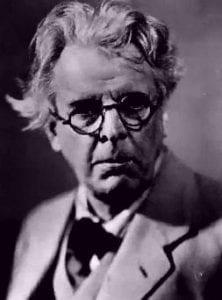
William Butler Yeats was born on June 13, 1865 in the village of Sandymount in County Dublin, Ireland. His father, originally a lawyer, quit his career in the law to become an artist, a career that Yeats’s brother Jack would follow. After attending the Metropolitan School of Art in Dublin from 1884 to 1886, Yeats moved to London with his family. Here he met George Bernard Shaw, Oscar Wilde, and other poets and artists. His first volume of verse, The Wanderings of Oisin and Other Poems , appeared in 1889. In this same year, Yeats met Maud Gonne, a beauty with nationalist sympathies; Yeats’s unrequited love affair with Gonne lasted decades, and she served as the impetus for much of his lyric poetry.
Yeats met Lady Augusta Gregory in 1894, a friendship that proved essential for the Irish Literary Revival. In 1899 , Yeats helped found the Irish Literary Theatre, which become the Abbey Theatre in 1904 and served as the main source for the renaissance of Irish drama in the early years of the 20th century. It helped put Irish drama at the forefront of world theater, staging the premieres of plays like Yeats’s own On Baile’s Strand and Sean O’Casey ’s The Plough and the Stars .
Yeats’s poetic output throughout the years was extremely varied, from the nostalgia-drenched Irish imagery of “The Lake Isle of Innisfree” to the 1892 dram a The Countess Cathleen , from the abstruse symbology of the 1925 A Vision to the political nature of poems like “Easter 1916.” His poetry often dealt with the relation between artifice and truth, between poetic creation and natural beauty. Yeats continued to be interested in Irish national politics even after the country gained independence from England: he was appointed to the Irish Senate in 1922 .
Yeats’s poetry continued to evolve as he aged. His last years saw the publication of many of his strongest works, including “Among School Children” in 1928 and “The Circus Animal’s Desertion” in 1939. After briefly flirting with the Irish Blueshirts, an Irish Fascist political party, Yeats supported the Free State and distanced himself from Fascism in its German and Italian incarnations. Yeats died in Menton, France in 1939, the most celebrated Irish poet of the century and one of modernism’s most complex creators of verse and drama.
Yeats, (William) Michael Butler
Yeats, (William) Michael Butler (1921–2007), senator and MEP, was born on 22 August 1921 in Cuttlebrook House, Thame, Oxfordshire, younger child and only son of William Butler Yeats (qv), poet and dramatist, and Bertha Georgie ('George') Yeats (qv) (née Hyde-Lees), daughter of a British army officer. In early 1922 the family moved to Dublin, settling at 82 Merrion Square. Some months each year were spent at Ballylee Castle (Thoor Ballylee), a Norman tower close to the Coole Park estate in Co. Galway of Lady Gregory (qv).
Michael Yeats asserts in his autobiography, Cast a cold eye (1999), that he and his sister Anne (qv), an artist and stage designer, saw little of 'the poet' in their early years; George 'accepted that her mission in life was to ensure that nothing would interfere with the production of great poetry for the world'; the children 'were kept apart from the ordinary, day-to-day life of the family' (Yeats, 1). He appears to have taken this in his stride. He describes his father as 'formidable … in a way, it was like living with a national monument', but insists that 'many of the depictions … bear little relationship to the father we knew at home … a photograph … shows him, in old age, full of vivacity and humour. This is the Yeats that I remember' (Yeats, 24). By the time Michael was 10 and capable of having 'an intelligent interest in events', his father was 66 and in poor health; he died when Michael was 17, old enough to regret his passing just as they had begun to establish a closer relationship.
Michael suffered a bowel haemorrhage shortly after his birth and a month later underwent surgery for an infantile hernia. In 1927, suffering from a suspected tubercular infection, he was sent to 'L'Alpe Fleurie' boarding school at Villars-sur-Bex, Switzerland. Anne joined him some months later; they remained there until 1930, spending family Christmases in Rapallo, Italy. The language of the school was French and Michael became bilingual; returning to Dublin he knew more French than English. Through lack of practice he lost this proficiency, and although later in life he would again use French daily, he never regained the perfect accent of his childhood.
With the family now living in Fitzwilliam Square, Michael attended school in Palmerston Park, Ranelagh, for a year, before switching to Baymount boarding school in Dollymount. There his political sensibilities were awakened. The prevailing view among his schoolmates was that, to ensure the ties with Britain remaining in the aftermath of the 1921 Anglo–Irish treaty were preserved, Cumann na nGaedheal and W. T. Cosgrave (qv) must be supported. In the face of their trenchant opinions, rather than because of personal conviction, he left Baymount in 1935 'a committed de Valera republican'. That September he started at St Columba's College, close to the Yeatses' new home, Riversdale, in Rathfarnham. One of his closest friends at the school, and for several years thereafter, was Brian Faulkner (qv), the future Stormont prime minister. In October 1939 Michael entered TCD , graduating in 1943 with a first-class degree in modern history and political science. He completed a BL degree at King's Inns in 1948, but never practised law.
He joined the College Historical Society at Trinity, believing that debating would help him overcome the shyness he had always suffered. He became its auditor, and in that capacity organised the inaugural meeting of the new session in November 1944. His topic was 'The small nations'; Taoiseach Éamon de Valera (qv) and Jan Masaryk, minister for foreign affairs in the Czechoslovakian government-in-exile in London, were his main speakers. Yeats had further involvement with the society in 1969, when it proposed admitting women members. The proposal passed by a single vote; having supported it, Yeats contended that had he stayed at home on the night of the vote the society would have remained all male.
At a meeting of Trinity's Cumann Gaelach (Gaelic Society), Yeats met Gráinne Dill Ní Éigeartaigh (O'Hegarty) (1925–2013), a harpist and singer, only daughter of Patrick Sarsfield O'Hegarty (qv), former IRB supreme council member and secretary of the Department of Post and Telegraphs, and Wilhelmina Rebecca Smyth (1890–1962), a Cumann na mBan veteran. Yeats and Gráinne married on 14 May 1949 and lived at Cliff House, Coliemore Road, Dalkey, Co. Dublin.
During the 1943 general election campaign, Yeats attended a Fianna Fáil public meeting organised by Sean MacEntee (qv) and offered his services. After the election he was invited to join the party and became a member of the Fintan Lalor cumann in Rathmines. He agreed to contest a Dáil Éireann seat in 1948 and was selected alongside MacEntee as a candidate in the three-seat Dublin South-East constituency. He came fourth, behind John A. Costello (qv), MacEntee and Noel Browne (qv). At the 1948 ard fheis he was elected to the Fianna Fáil national executive. He contested the 1951 dáil election, again finishing fourth. Fianna Fáil won the election, and de Valera appointed Yeats to the seventh Seanad Éireann. In this he followed his father, a member of the first Free State senate. After the 1952 budget, in which MacEntee had raised income tax by five per cent, Yeats, supported by a dáil colleague, drafted a motion criticising MacEntee's policies. It was debated, but eventually defeated.
In April 1953 Yeats was a delegate to the Council of Europe, serving on the committee for population and refugees; this awakened a life-long interest in European affairs. He contested the 1954 seanad election but lost his seat; he continued to attend Fianna Fáil national executive meetings in his capacity as publicity officer. Following de Valera's success in the presidential election of 1959, Yeats was responsible for writing and publishing the new president's election address.
Elected on the seanad labour panel in 1961, he was nominated by Seán Lemass (qv) to the eleventh seanad in 1965, elected on the cultural and educational panel in 1969 and 1973, and was a nominee of Jack Lynch (qv) in 1977 (he had run Lynch's general election campaign tour that year). During the Fianna Fáil parliamentary party debate on the 1968 referendum to abolish proportional representation, Yeats proposed an amendment that the single transferable vote be preserved in single-member constituencies, but it was rejected. He was one of seven parliamentary party members to vote against holding the referendum. Yeats was asked to run as cathaoirleach (chair) of the seanad in 1969. Neil Blaney (qv) attempted to block his selection, but Yeats secured the party nomination and ultimately was elected; Mary Robinson (b. 1944) and Owen Sheehy-Skeffington (qv) voted against him. He resigned as cathaoirleach on 1 January 1973, having been nominated as a Fianna Fáil member of the European parliament. Under the rules then applying, he was able to remain a senator, and was re-elected to the thirteenth seanad later in 1973.
Appointed a temporary member of the European parliament's governing body, he was asked on 16 January 1973 to make the opening speech on behalf of the Irish delegation. Because he had been cathaoirleach of Seanad Éireann – something he contended carried more weight with European colleagues than reflected the reality of the post – he believed he was often treated with a level of respect abroad that was not warranted. In 1975 he became a vice-president of the parliament, having failed to be elected president by one vote. As such, Yeats was again a member of the governing bureau and became involved in parliamentary administration. He served his final two years as MEP on the budget rules and procedures committee.
Ahead of the first direct European elections in 1979, the Fianna Fáil government established an independent commission to decide on Ireland's European constituency boundaries. Yeats's submission that they be based on the provincial boundaries was accepted. Within the parliament he was asked to draft a report on revising its rules of procedure. All of the changes proposed were accepted in plenary session. He contested the 1979 election for the Dublin constituency, but lost his seat to Síle de Valera (b. 1954). On 12 March 1980 Yeats resigned from the seanad, and in April became a director on the secretariat of the EEC Council of Ministers, a post he held until his retirement in 1986.
Yeats's career in public service might be said to have fulfilled a prophecy by his aunt Lily ( Susan Mary Yeats (qv)) that he would be a diplomat. Despite pursuing a career at some remove from his family's literary and artistic background, however, he cared assiduously for the literary legacy for which he was responsible. He served as a patron of the Yeats International Summer School and variously as chair, secretary and director of the Cuala Press, which he and Anne revived in 1969 and ran for many years. He insisted that scholars have unrestricted access to his father's papers and often waived copyright fees. He donated 1,000 items of his father's writings to the NLI in 1985; in 2000 he donated the 'automatic writing' collection, and later W. B. Yeats's personal library, having turned down a seven-figure offer from a potential buyer.
He was a member of the LDF battalion attached to Portobello barracks, Rathmines, in the early 1940s; was conferred with an honorary doctorate of law in 1978 by Florida State University; was a governor of the Royal Irish Academy of Music; participated in the interdisciplinary Distinguished British and Irish Studies Series of lectures at Clemson University, South Carolina, in February 1993; and was made a freeman of Sligo Borough in May 2003. Michael Yeats died on 3 January 2007 in St Michael's Hospital, Dún Laoghaire, Co. Dublin, and was buried at Shanganagh cemetery. He was survived by his wife, daughters Caitríona Dill (b. 1951) and Siobhán Máire (b. 1953), and son Pádraig Butler (b. 1959). Another daughter, Síle Áine (b. 1955), also survived him but died in September 2007.
Burke, IFR (1976), 1,233, 1,265; ITWW , 363; Maureen Cairnduff, Who's who in Ireland: the influential 1,000 (1984); Ir. Times , 22, 26 Mar. 1997; 11 Jan. 2006; 6 Jan. 2007; 27 Apr. 2013; Sunday Tribune , 14 Mar. 1999; Michael B. Yeats, Cast a cold eye: memories of a poet's son and politician (1999); Sligo Champion , 16 May 2003; R. F. Foster, W. B. Yeats: a life , ii: The arch poet (2003); Times , 10 Jan. 2007; Independent (London), 10 Jan. 2007; Ir. Independent , 3 Sept. 2007
Publishing information

IMAGES
VIDEO
COMMENTS
William Butler Yeats (born June 13, 1865, Sandymount, Dublin, Ireland—died January 28, 1939, Roquebrune-Cap-Martin, France) Irish poet, dramatist, and prose writer, one of the greatest English-language poets of the 20th century. He received the Nobel Prize for Literature in 1923. Yeats's father, John Butler Yeats, was a barrister who ...
Biography Early years. William Butler Yeats was born in Sandymount in County Dublin, Ireland. His father, John Butler Yeats, was a descendant of Jervis Yeats, a Williamite soldier, linen merchant, and well-known painter, who died in 1712. Benjamin Yeats, Jervis's grandson and William's great-great-grandfather, had in 1773 married Mary Butler of a landed family in County Kildare.
William Butler Yeats was born on June 13, 1865, in Dublin, Ireland, the oldest child of John Butler Yeats and Susan Mary Pollexfen. Although John trained as a lawyer, he abandoned the law for art ...
William Butler Yeats (1865-1939) was born in Dublin. His father was a lawyer and a well-known portrait painter. Yeats was educated in London and in Dublin, but he spent his summers in the west of Ireland in the family's summer house at Connaught. The young Yeats was very much part of the fin de siècle in London; at the same time he was ...
William Butler Yeats is widely considered to be one of the greatest poets of the 20th century. He belonged to the Protestant, Anglo-Irish minority that had controlled the economic, political, social, and cultural life of Ireland since at least the end of the 17th century. Most members of this minority considered themselves English people who happened to have been born in Ireland, but Yeats ...
William Butler Yeats Biography. Born: June 13, 1865 Dublin, Ireland Died: January 28, 1939 Roquebrune, France Irish poet and dramatist William Butler Yeats was an Irish poet and dramatist (playwright). Some think he was the greatest poet of the twentieth century. He won the Nobel Prize for literature in 1923.
Born in Sandymount, Dublin, Ireland, on June 13, 1865, William Butler Yeats was the son of the well-known Irish painter, John Butler Yeats. He spent his childhood in County Sligo, where his parents were raised, and in London. He returned to Dublin at the age of fifteen to continue his education and to study painting, but quickly discovered that ...
William Butler Yeats was an Irish poet and playwright who played a leading role in the Irish Literary Renaissance. His works often explore themes of mysticism, Irish mythology, and the supernatural. William Butler Yeats is regarded as one of the most important poets of the 20th century. Remarkably, in 1923, he won the Nobel Prize in Literature ...
A Young Poet . Yeats was always interested in mystical theories and images, the supernatural, the esoteric and the occult. As a young man, he studied the works of William Blake and Emanuel Swedenborg and was a member of the Theosophical Society and Golden Dawn.But his early poetry was modeled on Shelley and Spenser (e.g., his first published poem, "The Isle of Statues," in The Dublin ...
In addition to founding the Abbey Theater in 1904, Yeats also served six years as senator for the Irish Free State beginning in 1922. He was awarded the Nobel Prize in Literature in 1923. Yeats died on January 28, 1939, in the south of France, but is buried in Drumcliff, County Sligo. His epitaph, taken from his poem, "Under Ben Bulben," reads:
William Butler Yeats, (born June 13, 1865, Sandymount, Dublin, Ire.—died Jan. 28, 1939, Roquebrune-Cap-Martin, France), Irish poet, dramatist, and prose writer.The son of a well-known painter, Yeats early developed an interest in mysticism and visionary traditions as well as in Irish folklore, and both interests would continue to be sources of poetic imagery for him.
Yeats, William Butler (1865-1939), poet and dramatist, was born 13 June 1865 at Georgeville, Sandymount Avenue, Dublin, the eldest child of John Butler Yeats (qv) (1839-1922) and Susan Mary Yeats (née Pollexfen; 1841-1900). The couple had six children: besides William there were two other sons, one of whom died in infancy, and three daughters, one of whom also died in infancy.
William Butler Yeats Biography. W illiam Butler Yeats was an instrumental part of the "Irish Literary Revival" that redefined Irish writing, and it is impossible to imagine 20th-century Irish ...
W.B. Yeats Biography. William Butler Yeats (1865-1939) was born at Georgeville, Sandymount Avenue, Dublin, the eldest child of John Butler Yeats and Susan Pollexfen. His father, a barrister, later became an artist. His mother was the daughter of a prosperous shipping merchant in Sligo.
W. B. YEATS, 1865—1939. ByJoseph Hone.The Macmillan Company.$6.00. MR. HONE'S official biography of Yeats has been awaited with great interest by those many readers of poetry who consider ...
The Nobel Prize in Literature 1923 was awarded to William Butler Yeats "for his always inspired poetry, which in a highly artistic form gives expression to the spirit of a whole nation" ... Jeffares, Alexander Norman, W.B. Yeats : a New Biography. - London : Hutchinson, 1988: Pierce, David, Yeats's Worlds : Ireland, England and the Poetic ...
Photo from the Nobel Foundation archive. William Butler Yeats. The Nobel Prize in Literature 1923. Born: 13 June 1865, Dublin, Ireland. Died: 28 January 1939, Roquebrune-Cap-Martin, France. Residence at the time of the award: Ireland. Prize motivation: "for his always inspired poetry, which in a highly artistic form gives expression to the ...
William Butler Yeats's Works. The first popular poem of William Yeats was "The Isle of Statues.". He composed his first solo work " Mosada: A Dramatic Poem" in 1886, after which he published "The Wanderings of Oisin and Other poems" in 1889. He also wrote poems with mystical and esoteric themes as well as with the subject of love ...
A Short Biography of William Butler Yeats. William Butler Yeats was born on 13th June 1865 in Dublin, Ireland, to John Yeats and Susan Mary Pollexfen. He was the eldest son of the family. His father was a lawyer, and when Yeats was born, he left his profession. Yeats' early years of life were spent in London and also made frequent visits to ...
W. B. Yeats bibliography. This is a list of all works by Irish poet and dramatist W. B. (William Butler) Yeats (1865-1939), winner of the 1923 Nobel Prize in Literature and a major figure in 20th-century literature. Works sometimes appear twice if parts of new editions or significantly revised. Posthumous editions are also included if they ...
Biography. by Anthony Domestico. W.B. Yeats (1865-1939) is the figure most associated with the Irish Literary Revival of the early 20th century; his poetry, prose, and drama helped earn him the 1923 Nobel Prize in Literature. He was a complex amalgam of influences and interests, deeply engaged with the political issues of Home Rule yet equally fascinated by esoteric spiritualism, using some of ...
William Butler Yeats is widely considered to be one of the greatest poets of the 20th century. He belonged to the Protestant, Anglo-Irish minority that had controlled the economic, political, social, and cultural life of Ireland since at least the end of the 17th century....
Yeats, (William) Michael Butler (1921-2007), senator and MEP, was born on 22 August 1921 in Cuttlebrook House, Thame, Oxfordshire, younger child and only son of William Butler Yeats (qv), poet and dramatist, and Bertha Georgie ('George') Yeats (qv) (née Hyde-Lees), daughter of a British army officer. In early 1922 the family moved to Dublin, settling at 82 Merrion Square.
William Butler Yeats is regarded as one of the greatest poets of the 20th century. Most of his work has Irish subjects. Yeats was also a successful author of numerous plays and wrote prose works. Recurrent themes in his writing are the contrast of art and life, masks, cyclical theories of life (the symbol of the winding stairs), and the ideal ...
Surely some revelation is at hand; Surely the Second Coming is at hand. The Second Coming! Hardly are those words out. When a vast image out of Spiritus Mundi. Troubles my sight: somewhere in sands of the desert. A shape with lion body and the head of a man, A gaze blank and pitiless as the sun, Is moving its slow thighs, while all about it.